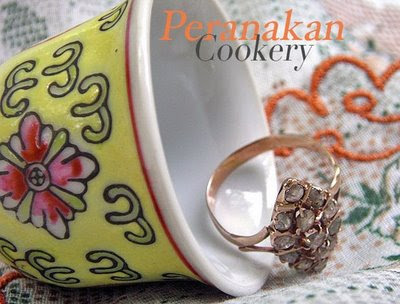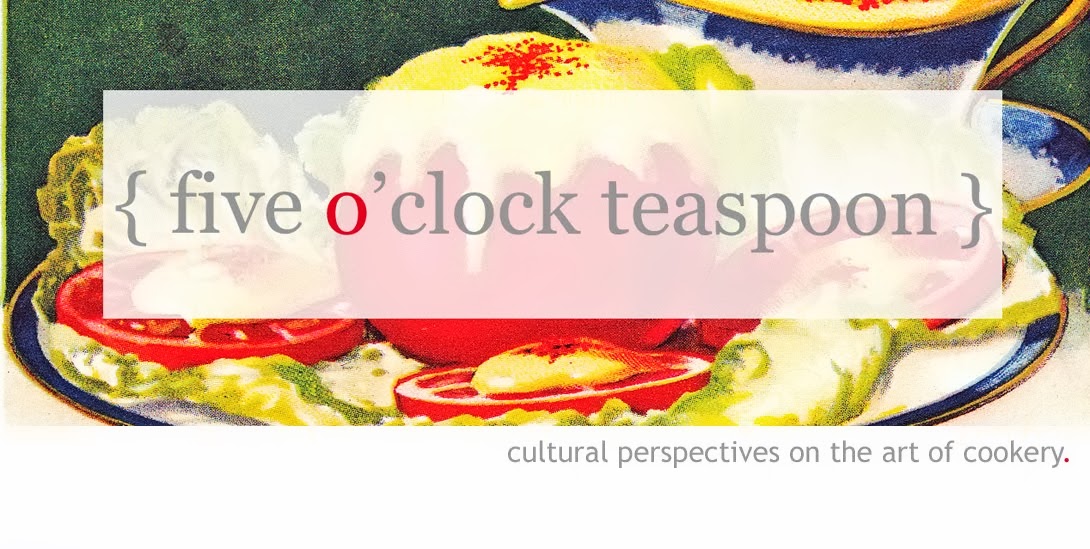
Peranakan culture is a blend of Malay and Chinese traditions, practices, and tastes that developed in the Straits Settlements of Penang, Malacca, and Singapore. Many Peranakan families can be traced back to the 17th and 18th centuries, when Chinese tradesmen and merchants (usually of Teochew or Hokkien extraction) began marrying local Malay women. The mix of cultures is vividly realized in Peranakan cuisine as the women (known as Nonyas) combined traditional Malay ingredients such as asam (tamarind), daun kesum (Vietnamese mint), belacan (shrimp paste), and pandan (screw pine) with Hokkien style noodles, rice, and dumplings.
Nonya cuisine is an art that traditionally required years of practice to master. Despite regional differences, the basis of all Nonya cooking is a delicate balance of spices and herbs, augmented with local fruits and vegetables such as starfruit, banana buds, jackfruit, and long beans, traditionally grown in gardens behind the kitchen. Coconut milk, cane sugar, and candlenuts add richness, creating complexly flavored dishes that are at once sweet, spicy, salty, and sour. Most dishes can be grouped into the categories of rice, salads, soups, gravy, and curry dishes. A typical meal consists of several such choices.
 A young banana plant
A young banana plantNonya desserts are just as enticing, the most common of which is kueh (steamed cakes or puddings), readily available from hawkers, street vendors, and bakeries in Singapore and Malaysia. Kueh come in a variety of forms including kueh sarlat (rice cake with custard), kueh bongkong (rice cakes wrapped in banana leaves), kueh dadar (coconut rolls), kueh bangket (tapioca cake), and kueh lapis beras (rainbow layer cake), to name a few.
 Kueh Lapis Beras
Kueh Lapis Beras Ang Koo Kueh
Ang Koo KuehI decided to experiment with kueh sarlat, a glutinous rice cake steamed with coconut milk and topped with pandan-flavored custard. Usually the custard is dyed green, contrasting with the white rice below like the colors in a hard-edge painting. Finally, the cake is cut into elegant diamond shapes. The traditional method for making kueh requires hours and involves many steps. I wanted to make a savory kueh that could be served for breakfast, lunch, or dinner, that would be quick and easy to whip up using ingredients on hand. I came up with coconut rice and curry custard kueh, steamed in individual egg cups that allow stove to table serving. The curry flavor evokes the Indian influence prevalent in South East Asian cooking and works beautifully with the coconut rice. And the golden hued custard doesn't require any dye.

Curry Kueh Cups
Serves 4
Ingredients:
Rice
1 cup rice, preferably glutinous
1 cup coconut milk
1 cup water
2 tsp sugar
1. Cook rice in water, coconut milk, and sugar. Set aside to cool while you make the custard.
Custard
2 eggs
4 Tbs sugar
2 tsp of your favorite curry powder
3/4 cup coconut milk
1. Heat eggs and sugar in a heavy bottomed saucepan over very low heat, stirring constantly so as not to cook the eggs, until sugar dissolves.
2. Remove from heat and add coconut milk and curry, stirring well to combine.
3. Fill about 3/4 of each of four heat-proof egg cups or ramekins with rice and press down to compress rice.
4. Heat custard over very low heat for about a minute, stirring continuously. Pour custard over rice.
5. Place egg cups in a deep pot and carefully pour in enough water to come up about an inch around the sides of the cups.
6. Bring to the boil then simmer and cover. Steam for 1 hour or until a knife inserted into the custard comes out clean.
Note: You can easily cook the kueh in ramekins and serve in decorative egg cups. Simply line the ramekins with parchment paper to make the transfer easy.
References:
Ho Wing Meng, Straits Chinese Porcelain. Singapore: Marshall Cavendish, 2004.
Khoo Joo Ee, The Straits Chinese: A Cultural History. Amsterdam: The Pepin Press, 1998.
Lee Chin Koon, Mrs Lee's Cookbook: Nonya Recipes. Singapore: Eurasia Press, 1994.
Lee, Peter and Jennifer Chen, The Straits Chinese House. Singapore: National Museum of Singapore, 2006.
Leong Yee Soo, Singaporean Cooking. Singapore: Eastern Universities Press.
